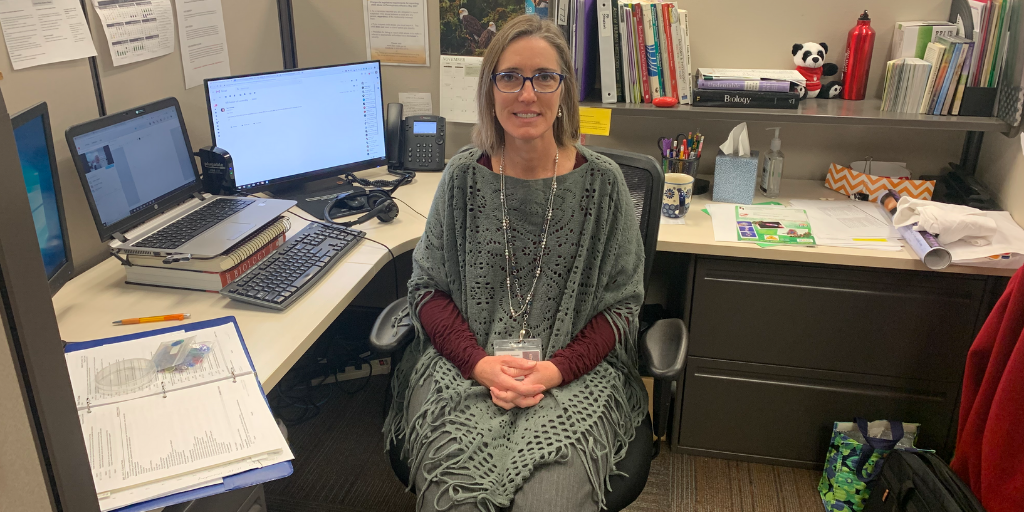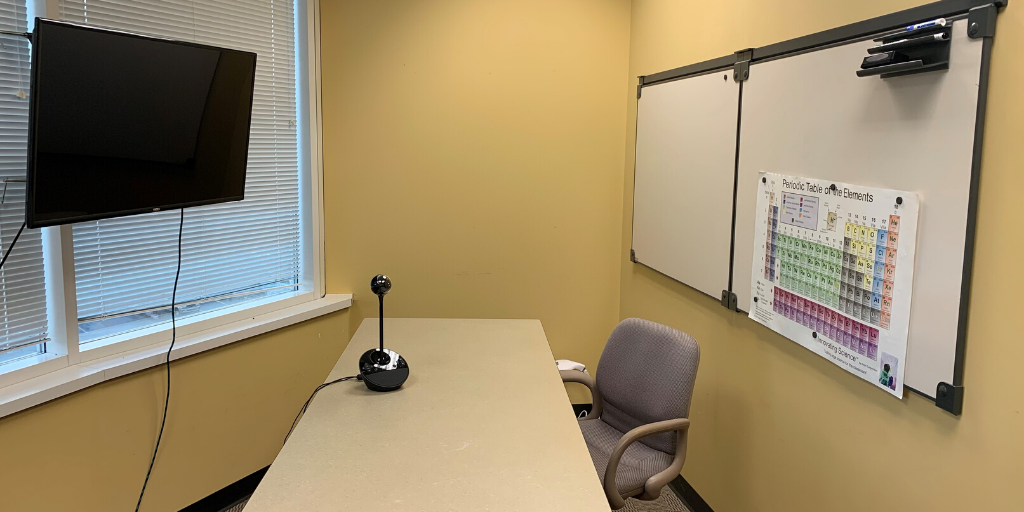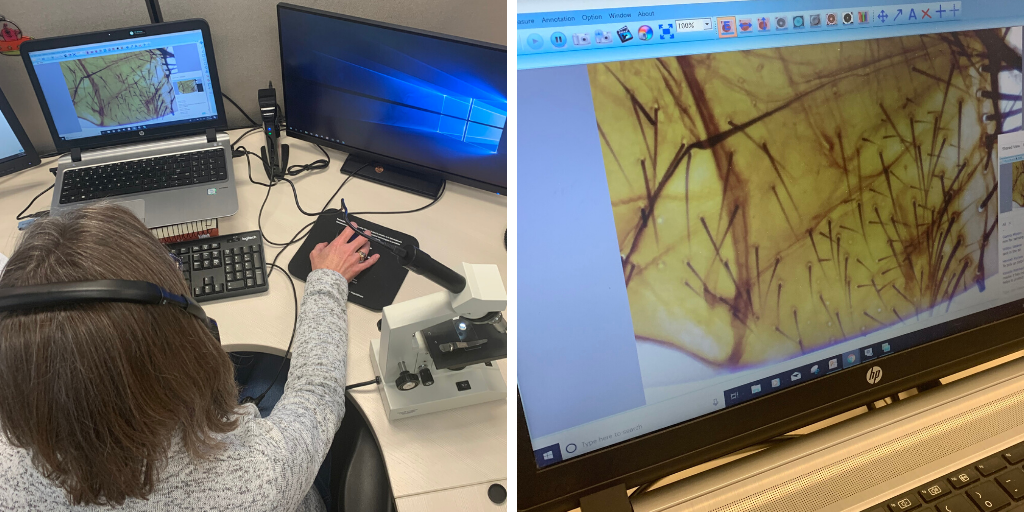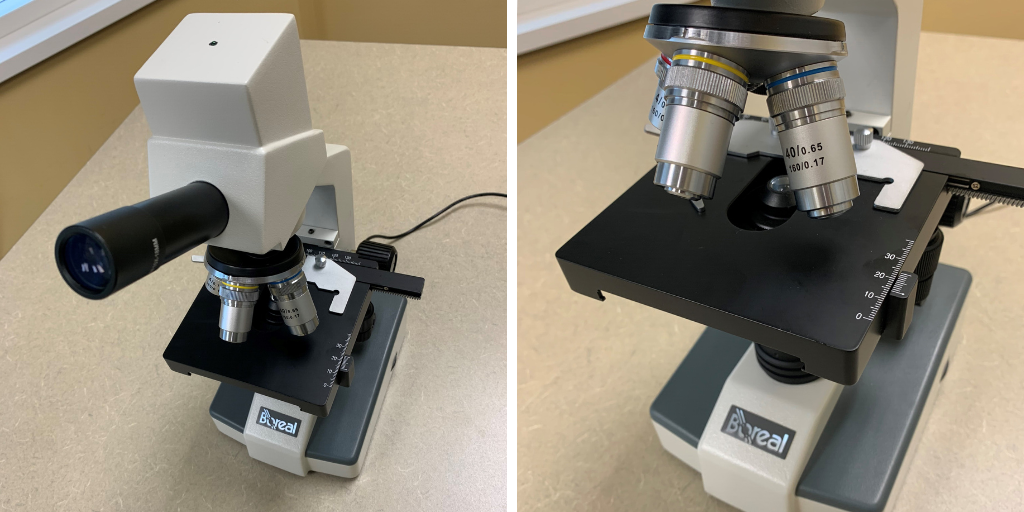
As one of the longest-serving teachers at PA Distance, Mrs. Coleen Brennen has been teaching Science for 12 years. Before that, she taught for another seven years, bringing her teaching experience to almost 20 years.
She had always been interested in the sciences and had started college thinking she wanted to work in a laboratory after she graduated. During her sophomore year at Duquesne University in Pittsburgh, the school dropped her Medical Technology major, forcing her to rethink her career path.
Mrs. Brennen realized that she wanted to combine her love for science and teaching after getting some exposure while volunteering as a Sunday School teacher for her church.
“I started out wanting to work in a lab, but realized that I liked working with people more,” she explained.
She graduated from Duquesne University with a Bachelor of Science in Secondary Education and later, earned a Masters of Science in Elementary Education, and became certified in Biology, General Science and Family and Consumer Science.
After 19 years of teaching, she explained, her favorite part is seeing the students take a genuine interest in a concept and which motivates them to want to learn more.
“I want to inspire students to like science, want to learn more about science, and not be afraid of science. Sometimes people think science is a difficult topic and I want students to see that everyone can learn it,” she said.
During her science labs, she hosts live learning lessons for her 7th graders in a special room on the 5th floor of the PA Distance office in Wexford, PA. The room contains a large flat-screen TV, a wide-angle lens camera, and a large table for her materials to be set-up for lab demonstrations.
“Our live learning classes are a really nice aspect of our school,” she explained. “It helps the students make connections with teachers and their peers even though we are in a cyber setting.”

One of her favorite lessons uses a special microscope that plugs right into her laptop, allowing her students to see what she is seeing through the lens, right on their computer screen. Using modern technology, Mrs. Brennen can make each student feel like they’re in the room with her while learning how to examine things under the microscope.
For that portion of her classes, students analyze a lot of insect parts under the microscope including bees wings and butterfly wings.

“I have a lot of students who like to draw. So, I like to give students the opportunity to earn credit if they want to draw what they see under the microscope,” she said, which adds to the many examples of art integration at PA Distance.
Mrs. Brennen also plans on coordinating with PA Distance art teacher, Mrs. Renee Belville, to create a lesson on symmetry in living things.
“Animals have basic body plans. They’re either asymmetrical, radial, or bilateral,” she explained.
After introducing these terms to students and relating it to animals, she is going to ask each student to draw something that falls into one of those categories.

Mrs. Brennen tries to connect other areas of interest to students who have hobbies outside of school.
She notes that, out of all of her class topics, her students love learning about animals. For kids that are more reluctant to join in on a discussion or raise their hand in class, a love for animals sometimes draws them out of their shell.
“If I have a student who loves to fish, and I can get them to talk about their love of fishing to others in the class, then that’s fantastic,” she said.
“When I teach about muscles and the human body, I try to engage students who are interested in physical fitness. When I teach about nutrition, I engage students who like cooking,” she explained. “When they share their knowledge and their interest with others, that engages them and we can connect it back to the lesson.”
However, some students have a harder time engaging in each lesson. For situations like this, Mrs. Brennen enlists the help of some online teaching tools.
“I try to use a variety of instructional tools to engage the students,” she said. “For science, we use Flocabulary to introduce vocabulary words to students,” she added.
Recently, Mrs. Brennen assisted her colleague, Science teacher Mrs. Sarah Simmons, to apply for a mini-grant from the Pennsylvania Department of Environmental Protection. If selected, the grant money will be used to train PA Distance teachers in MWEE (Meaningful Watershed Environmental Experience) and create environmental field trip opportunities for students in grades K-12.
These field trips will provide hands-on experiences that foster an understanding of the natural world and cultivate critical thinking and actions that promote environmental protection and sustainable management.
Grant awardees will be announced in April 2020, to celebrate Earth Day, and the new initiatives will be implemented in the 2020-2021 school year.
Mrs. Brennen’s science curriculum is always adapting and evolving which is the same for every subject taught at PA Distance. Grant money makes possibilities for change easier and helps teachers bring new and exciting opportunities to their students.
Mrs. Brennen also commented on the quality of the teachers at PA Distance, explaining that they all come with a unique background and each bring something beneficial to the table.
“I could walk around this building, talk to five teachers, and learn a new instructional tool that I’ve never seen before,” she said.
She also explained that the students at PA Distance are supportive of each other.
“When I get a new student in a class, other students immediately respond with helpful hints when they have a question,” Mrs. Brennen said. “I’ve taught here for a while both in high school and middle school and I’ve always seen that students are supportive across the board.”
“Even though we aren’t face-to-face with students, the staff and teachers care a great deal about their students and want them to succeed, which is why we’re here,” she explained.


